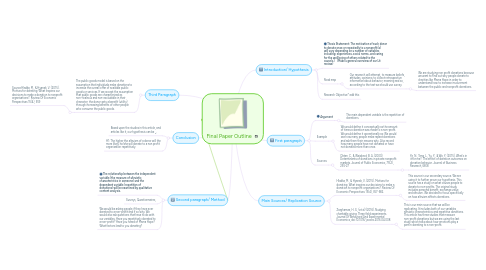
1. Second paragraph/ Method
1.1. The relationship between the independent variable (the measure of altruistic characteristics in someone) and the dependent variable (repetition of donations) will be examined by qualitative content analysis.
1.2. Surveys, Questionnaires,
1.3. We would be asking people if they have ever donated to a non-profit and if so why. We would also ask questions that have to do with our variables. Have you repetitively donated to a non-profit? Have you heard of Mama Hope? What factors lead to you donating?
2. Third Paragraph
2.1. The public goods model is based on the assumption that individuals make donations to increase the overall offer of available public goods or services. If we accept the assumption that public goods are characterized as non-rivalrous and non-excludable in their character, the donor gets a benefit (utility) through increasing benefits of other people who consume the public goods.
2.1.1. Source:Hladka, M., & Hyanek, V. (2015). Motives for donating: What inspires our decisions to make a donation to nonprofit organisations?. Review Of Economic Perspectives 15(4), 359
3. Conclusion
3.1. Based upon the studies in this article, and articles like it, our hypothesis can be _____.
3.2. H1: The higher the altruism of a donor will the more likely he/she will donate to a non profit organization repetitively.
4. Introduction/ Hypothesis
4.1. Thesis Statement: The motivation of each donor to donate once or repeatedly to a nonprofit(s) will vary depending on a number of variables including: experiences, social norms, and caring for the well being of others related to the cause(s). (Make a general overview of our Lit review)
4.2. Road map
4.2.1. Our research will attempt to measure beliefs, attitudes, opinions; to collect retrospective information about behavior, meaning and so, according to the text we should use survey.
4.2.1.1. We are studying non profit donations because we want to find out why people donate to charities like Mama Hope in order to understand how to increase involvement between the public and nonprofit donations.
4.3. Research Objective* add this
5. First paragraph
5.1. Argument
5.1.1. The main dependent variable is the repetition of donations.
5.2. Example
5.2.1. We would define it conceptually as the amount of times a donation was made to a non-profit. We would define it operationally as: We would see how many people make repeat donations and ask them their reasons why. Also record how many people have not donated or have not donated more than once.
5.3. Sources
5.3.1. Okten, C., & Weisbrod, B. A. (2000). Determinants of donations in private nonprofit markets. Journal of Public Economics, 75(2), 255-27
5.3.1.1. Ye, N., Teng, L., Yu, Y., & Wa, Y. (2015). What's in it for me?: The effect of donation outcomes on donation behavior. Journal of Business Research, 68(3)
6. Main Sources/ Replication Source
6.1. Hladka, M., & Hyanek, V. (2015). Motives for donating: What inspires our decisions to make a donation to nonprofit organisations?. Review Of Economic Perspectives 15(4), 357-382.
6.1.1. This source is our secondary source. We are using it to further prove our hypothesis. This source has a study on what causes people to donate to non-profits. The original study includes personal benefit, exchange value, and altruism. We decided to focus specifically on how altruism affects donations.
6.2. Zarghamee, H. S., (et al) (2016). Nudging charitable giving: Three field experiments. Journal Of Behavioral And Experimental Economics, doi:10.1016/j.socec.2016.04.008
6.2.1. This is our main source that we will be replicating. It includes both of our variables, altruistic characteristics and repetitive donations. This article has three studies that measure non-profit donations but we are using the last study which talks about how emotions play a part in donating to a non-profit.

